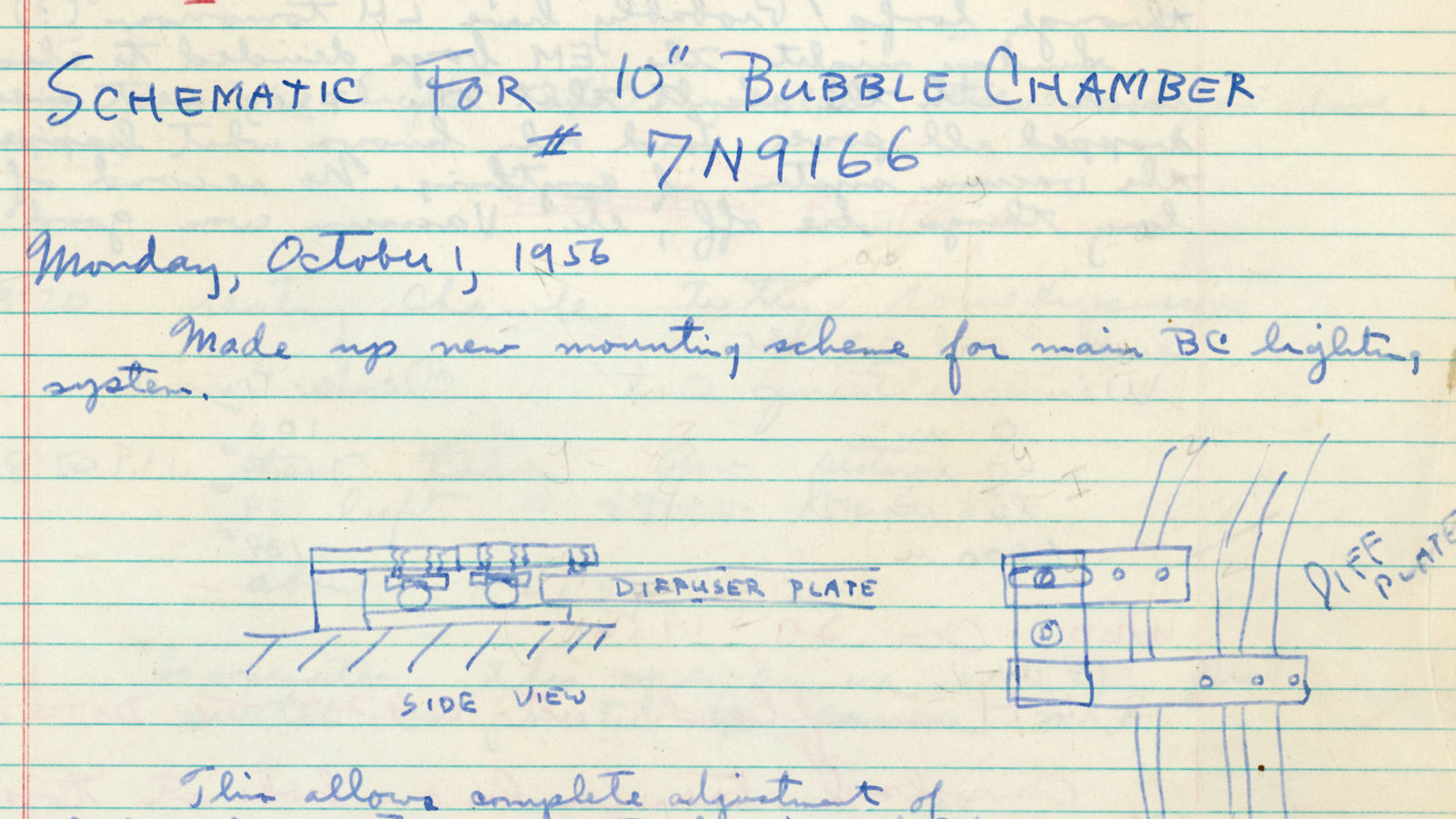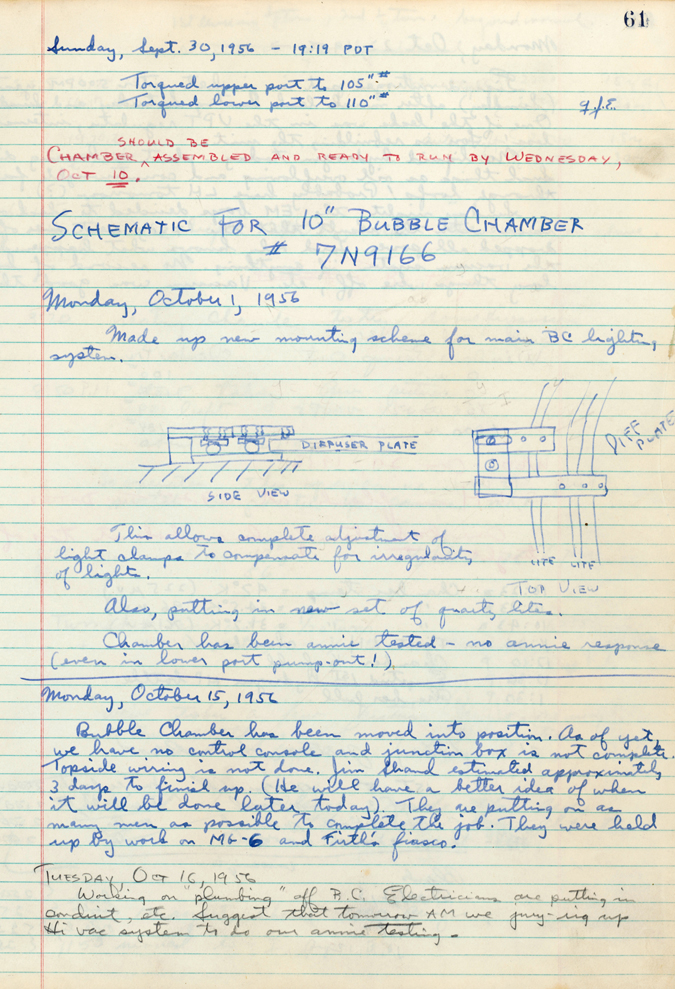Glaser’s detector was a small glass container filled with diethyl ether heated under pressure to just below boiling. Particles blasted out of an atomic nucleus would cleave through this superheated liquid like tiny torpedoes, leaving in their wake trails of bubbles that could be photographed and analyzed.
Alvarez immediately saw room for improvement. First he replaced the diethyl ether with liquid hydrogen, because the single-proton nuclei of hydrogen atoms minimized any interference with the particles being tracked. Then, after proving that an all-glass chamber composition wasn't necessary for obtaining good bubble tracks and accurate photos, he began building chambers out of metal with glass windows.
These “dirty chambers”—to distinguish them from the all-glass “clean chambers”—quickly mushroomed in size, from barely two inches to 72 inches within a decade. In 1960, Alvarez’s “dirty bubble chamber” enabled him to discover the Y particle, a proton-like particle containing a strange quark. The discovery established that new states of matter can be found inside the nuclei of high-energy atoms. Both Alvarez and Glaser would go on to win Nobel Prizes in physics.








